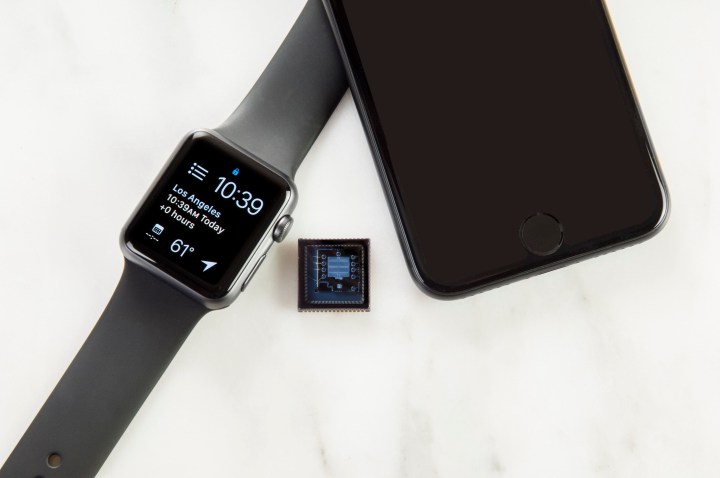
Si-Ware says that it plans offer the chip to manufacturers at around $100 a piece when it goes into production in the fourth quarter of this year. The company does plan to make it available for developers with a month or two, however, meaning actual devices with the NeoSpectra chip built in could be ready by the holidays.
Si-Ware is already demoing a iPhone case with its chip built in, which can scan and measure food and coffee to detect things like the presence of gluten and the amount of caffeine. It is also marketing its product to wearable manufacturers, where it sees use in measuring key biochemistry levels like glucose.
So how does this technology work? Spectrometers work by sending out a pulse of near-infrared light that causes materials in an object to vibrate. From the returned light, the exact material composition of an object can be obtained.
Spectroscopy used to be only the domain of devices that cost several thousand dollars, but advancements have allowed chipmakers like Si-Ware to miniaturize these complex devices down to a size that can be fit into pre-existing smart devices.
The NeoSpectra Micro is only 18 by 18 millimeters in size, and just 4 millimeters thick — thin enough to fit into most mobile and wearable applications, and at a cost comparable to current sensors that most of us now couldn’t imagine a smartphone without.
“In the same way that inertial sensors, accelerometers, and gyros became small enough and low-cost enough for consumer electronic products — enabling a host of applications for motion sensing — NeoSpectra Micro will open up new and unprecedented applications for material analysis,” Si-Ware executive vice president Scott Smyser said.
The company also claims its spectroscopy solution operates at higher near-infrared wavelengths than its competitors, which in theory would result in more accurate readings.
Either way, yet another molecular scanning option on the market sure makes it seem like the technology will soon be commonplace. While Consumer Physics so far has focused on spectroscopy in the form of a separate device outside of the Changhong H2 smartphone, having a chip manufacturer like Si-Ware now producing a widely available chip-based solution makes it seem like such functionality will become a lot more commonplace in the future.
“We believe [the NeoSpectra Micro] will change the way we perceive spectroscopy, taking it out of the lab environment and bringing it into consumer hands,” Smyser said.


